#GasMonitoring
Explore tagged Tumblr posts
Text
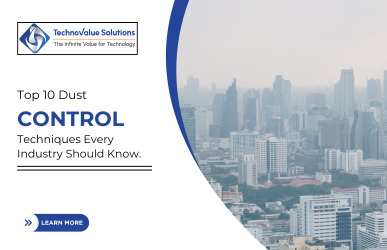
Top 10 Dust Control Techniques Every Industry Should Know
Dust may appear minor, but in industrial settings, it poses serious risks—affecting worker health, damaging equipment, and compromising product quality. In sectors like construction, cleanrooms, manufacturing, and mining, poor dust management can result in regulatory violations, safety concerns, and even fire or explosion risks. Implementing effective dust control techniques is a crucial part of air pollution control and maintaining a safe workplace. Through proper pollution monitoring and prevention strategies, industries can ensure cleaner, safer, and regulation-compliant operations. This blog highlights the top 10 dust control techniques that every industry should implement to efficiently manage particulate emissions.
Water Mist Spray & Misting Systems-
Water spraying and misting are among the most widely used dust suppression techniques, especially for outdoor applications. These systems work by releasing a fine mist or water spray over dusty surfaces, keeping them damp and preventing dust from becoming airborne. This method is particularly effective on unpaved roads, construction sites, and bulk material handling areas. It not only suppresses dust but also improves visibility and safety on the worksite. Automated misting systems can be programmed to activate based on humidity or dust concentration levels, making them both efficient and resource-conscious.
Commercial extractor fans-
Commercial extractor fans are designed to capture dust directly at its source before it spreads into the surrounding environment. These fans use high-efficiency filtration methods to trap dust particles and are commonly used in laboratories, manufacturing facilities, welding stations, and chemical processing lines. By utilizing commercial extractor fans, harmful particles are removed immediately, reducing worker exposure and enhancing indoor air quality. These extractor fan systems play a vital role in regulatory compliance and help industries meet their occupational safety targets effectively.
Dust Suppression Chemicals
When water alone isn’t sufficient or practical, dust suppression chemicals can be applied. These substances bind fine dust particles together, forming a crust or film on surfaces that prevents the dust from becoming airborne.This technique is often used in mining operations, heavy construction sites, and bulk storage areas where long-term dust suppression is needed. Many of these chemicals are environmentally friendly and biodegradable, making them suitable for sensitive areas where water usage must be minimized.
Industrial Vacuum Systems
Industrial vacuum systems are designed to collect dust and debris directly from the source of the operation. These systems are ideal for industries that generate dust during processes such as cutting, sanding, grinding, or material transfer.Unlike standard vacuums, industrial models are built to handle large volumes of fine particulate matter and often feature multi-stage filtration systems. Portable or centralized, they are a key part of good housekeeping and help in maintaining compliance with air quality standards.
Air Filtration Systems
Air filtration systems, especially those utilizing high efficiency particulate air (HEPA) filters or ULPA (Ultra-Low Penetration Air) filters, are vital in environments that require ultra-clean air—such as cleanrooms, electronics manufacturing, and pharmaceutical production.
Enclosures & Containment-
One of the most effective strategies for managing dust in industrial settings is to completely isolate the source of dust generation. By containing or separating the dust-producing processes from the surrounding environment, you can significantly reduce the spread of airborne particles, protecting workers and equipment from exposure. This approach not only improves air quality but also helps maintain cleaner workspaces and ensures compliance with safety regulations. Enclosures and containment systems do just that—by physically separating dusty operations from the rest of the work environment. These can be as simple as plastic sheeting around a sanding station or as complex as sealed containment booths with negative pressure ventilation. By preventing dust from spreading, containment methods protect both workers and equipment in adjacent areas, reducing cleanup and cross-contamination.
Surface Stabilization
Surface stabilization techniques involve treating ground surfaces with materials like gravel, polymers, or binding agents that prevent dust from forming. This is especially useful on access roads, parking lots, and large open areas where frequent traffic kicks up dust.Stabilizing the surface not only controls dust but also improves traction and durability, making it a dual-purpose solution. In areas prone to erosion or dry conditions, this method significantly reduces airborne dust levels with minimal maintenance.
Housekeeping Protocols-
Maintaining regular and disciplined housekeeping practices is one of the simplest, yet most impactful, strategies for controlling dust in any industrial or commercial environment. Consistently cleaning surfaces, floors, and equipment helps prevent the accumulation of dust particles, reducing the chances of them becoming airborne and causing health or operational issues. A well-planned housekeeping routine that includes the use of appropriate cleaning tools and methods, such as damp mopping or vacuuming with HEPA filters, can significantly improve air quality and create a safer, more productive workplace for everyone.
By cleaning work areas frequently- Using damp mops, microfiber cloths, or industrial vacuum cleaners—you can prevent dust accumulation and reduce the risk of it becoming airborne.Good housekeeping practices also support compliance with health and safety regulations and contribute to a more organized, professional workplace. Developing a schedule for daily, weekly, and monthly cleanups ensures dust doesn’t get out of control.
Personal Protective Equipment (PPE)
When other dust control measures aren't enough, Personal Protective Equipment (PPE) becomes the last line of defense. Workers should be equipped with proper respirators, dust masks, safety goggles, and protective clothing to minimize direct exposure to dust.This is particularly important in environments where dust levels can spike unexpectedly, or during maintenance tasks that involve disturbing settled dust. Ensuring workers have access to and are trained to use PPE properly is critical to workplace safety.
Process Modification
Often, the most effective approach to managing dust is to tackle its root cause directly.Process modification involves redesigning workflows, upgrading equipment, or substituting raw materials to reduce dust generation.For example, using pre-mixed materials instead of dry powders, or switching to automated processes that contain dust, can drastically cut down airborne particles. Not only does this improve dust control, but it also often results in more efficient and sustainable operations.
Conclusion
Dust control is more than just a safety precaution—it's a strategic investment that directly impacts your workplace’s efficiency, health standards, safety KPIs, and regulatory compliance. By applying the right mix of these ten techniques, industries can significantly reduce dust exposure, safeguard their workforce, and minimize costly disruptions. Whether you’re overseeing a cleanroom or a construction site, prioritizing dust control helps improve air quality, enhance product integrity, and boost your safety KPIs. Don’t wait—implement effective dust control today and ensure a safer, healthier tomorrow.
#GasMonitoring#ToxicGasDetection#CarbonMonoxideDetector#GasLeakDetector#IndustrialSafety#WorkplaceSafety#H2SMonitoring#VOCDetection#FixedGasDetectors#PortableGasDetectors#PersonalGasMonitors#EnvironmentalHealth#GasDetectionTechnology#ElectrochemicalSensors#InfraredGasSensor
0 notes
Text
Gas Analyzer LT-GA301
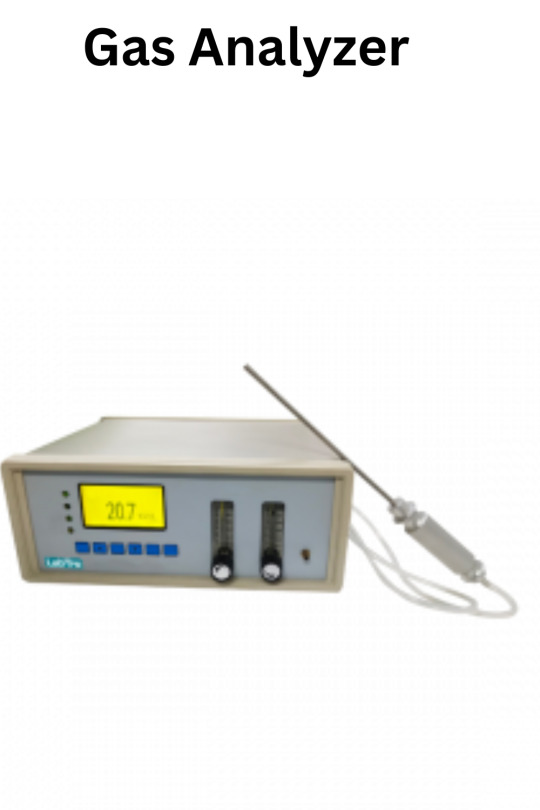
Labtro Gas Analyzer uses advanced infrared detection with a high-power carbon membrane self-priming pump to continuously monitor CO2, CO, CH4, NOx, SO2, and more. Equipped with electrochemical, infrared, and laser detection for flammable and toxic gases, it offers precision fine-tuning and one-click pump start.
0 notes
Text
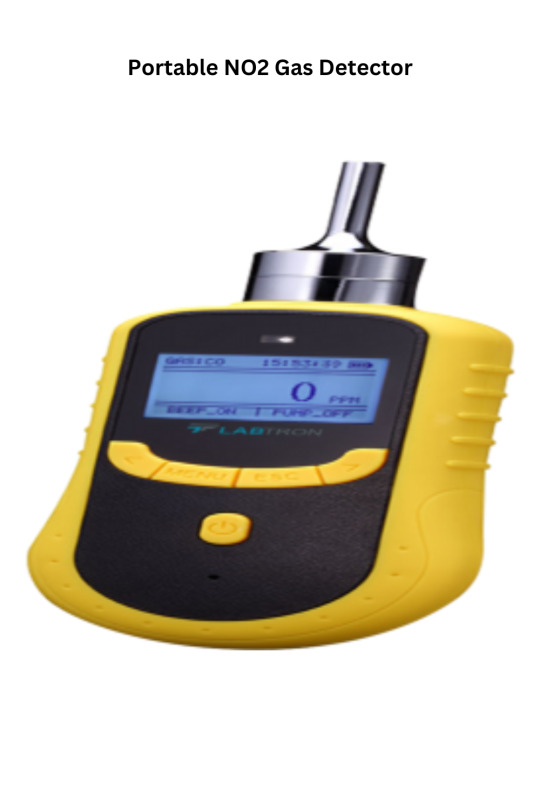
Portable NO2 Gas Detector
Labtron Portable NO₂ Gas Detector offers high accuracy with a measurement range of 0 to 1000 ppm. operates between -20°C and 50°C, uses electrochemical detection, and has an IP66 protection rating. Include a built-in micro sampling pump with 10 suction grades for precise measurement.
0 notes
Text
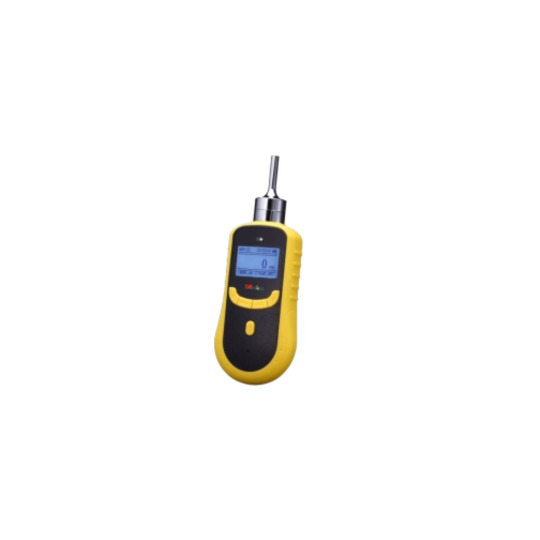
Portable Nitrogen Dioxide Gas Detector
Labmate Portable Nitrogen Dioxide Gas Detector monitors NO₂ levels from 0 to 1000 ppm with a fast internal pump. Housed in durable plastic, its compact design is versatile for various environments. It uses electrochemistry for detection, with a pump that draws in air for analysis.
0 notes
Text
https://www.industryarc.com/Research/commercial-fixed-gas-detector-market.html-800678?utm_source=TumblrPost&utm_medium=social&utm_campaign=vikassagar

Commercial Fixed Gas Detector Market (2024-2030)
#GasDetectors#GasDetection#SafetyFirst#IndustrialSafety#WorkplaceSafety#HazardousGas#SafetyTechnology#GasMonitoring
0 notes
Text
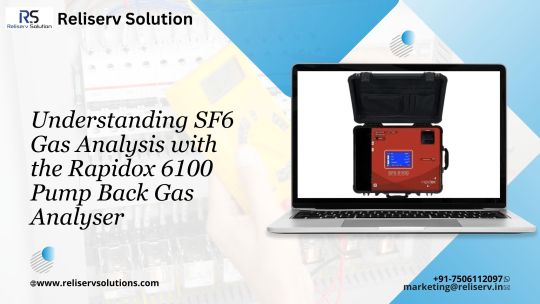
#sf6gas#analysis#Rapidox6100#gasanalyser#pumpback#gasdetection#environmentalmonitoring#gasmeasurement#gasmonitoring#airquality#industrialsafety#sustainability#gasanalysis#environmentalprotection#gasdetectionsystem#environmentalawareness
0 notes
Text

The Cambridge Sensotec Rapidox SF6 Fixed Detection System is a wide area monitoring solution to ensure safety for personnel working in, or who have access to, rooms that contain high voltage switchgear, circuit breakers and transformers where SF6 is at high pressure; it is important to monitor for leaks continuously.
𝐂𝐨𝐧𝐭𝐚𝐜𝐭 𝐮𝐬 𝐨𝐧 +91 7021624024 𝐨𝐫 𝐠𝐞𝐭 𝐢𝐧 𝐭𝐨𝐮𝐜𝐡 𝐰𝐢𝐭𝐡 𝐮𝐬 𝐚𝐭 [email protected]
0 notes
Link
1 note
·
View note
Photo

If your Facility is located in remote areas then you can go for Wireless Fixed Gas Detector Smart Evolution In Gas Detection-remoREAD Gas Detector.
0 notes
Link

𝑮𝒂𝒔 𝑫𝒆𝒕𝒆𝒄𝒕𝒐𝒓𝒔 𝒄𝒂𝒍𝒊𝒃𝒓𝒂𝒕𝒊𝒐𝒏 𝒔𝒆𝒓𝒗𝒊𝒄𝒆𝒔 𝒊𝒏 𝑫𝒆𝒍𝒉𝒊 A calibration service is a service with which any deviations and inaccuracies of measuring instruments and dimensional standards (or parts of a measuring instrument) are detected. The calibration determines any data that deviate from the “normal“. Gas Detection Equipment Calibration Services Calibration Services - Gas Detector Calibration Service Instrument calibration services in delhi Calibration services near me Nabl calibration lab in delhi Particle counter calibration services in india Calibration meaning Calibration lab in Delhi ncr a.a. calibration pvt ltd Meter Repair and Calibration Services - Inel Gas Calibration Services - SFI NABL Calibration of Water & Gas Flow Meter Services . Gas Calibration (Monitoring and Testing) Services 𝐅𝐨𝐫 𝐚𝐧𝐲 𝐟𝐮𝐫𝐭𝐡𝐞𝐫 𝐚𝐬𝐬𝐢𝐬𝐭𝐚𝐧𝐜𝐞 𝐩𝐥𝐞𝐚𝐬𝐞 𝐟𝐞𝐞𝐥 𝐟𝐫𝐞𝐞 𝐭𝐨 𝐜𝐨𝐧𝐭𝐚𝐜𝐭 𝐮𝐬:- 𝐌𝐫. 𝐒𝐚𝐫𝐯𝐣𝐞𝐞𝐭 𝐒𝐚𝐧𝐤𝐫𝐢𝐭 (𝐒𝐚𝐮𝐫𝐚𝐯) 𝐂𝐚𝐥𝐥 :- +𝟗𝟏-𝟖𝟖𝟔𝟎𝟏𝟑𝟗𝟏𝟗𝟒 { 𝐀𝐥𝐬𝐨 𝐚𝐯𝐚𝐢𝐥𝐚𝐛𝐥𝐞 𝐢𝐧 𝐖𝐡𝐚𝐭𝐬𝐚𝐩𝐩 } 𝐌𝐚𝐢𝐥 𝐈𝐝 :- [email protected] 𝐖𝐞𝐛 :- https://bit.ly/3aWYrNq
#safetyfirstindia#safety#safetyfirst#grabacabindelhi#explorewithgig#ghumindiaghum#disal#petrol#oil#gasfactory⛽️#factory#construction#industry#industrial#gasmonitors#gasmonitor#gasindustry#gásindustrial#gas#gasstation#gasleak#gasdetector#gasdetectors#calibrationservices#delhi#serviceindustry#calibration#detectors
1 note
·
View note
Text
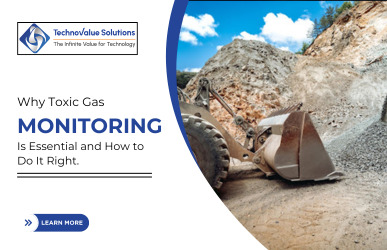
Why Toxic Gas Monitoring Is Essential—and How to Do It Right
Whether you're working in an industrial plant, laboratory, construction site, or enclosed space, the risks posed by toxic gases like carbon monoxide, hydrogen sulfide, or volatile organic compounds (VOCs) are real—and potentially deadly.
That’s why gas monitoring isn’t just a safety measure; it's a critical component of health protection, regulatory compliance, and environmental responsibility. This blog explains why toxic gas monitoring is essential and offers guidance on how to do it right—from choosing the right gas detector to understanding the technologies behind them.
1. The Hidden Dangers of Toxic Gases
Toxic gases can affect human health even at very low concentrations. Brief exposure to toxic gases can cause symptoms such as eye irritation, dizziness, and headaches.
Prolonged or high-level exposure can cause
Neurological damage
Reproductive and developmental disorders
Immune and respiratory system impairment
In extreme cases, unconsciousness or death
Common toxic gases like carbon monoxide (CO), hydrogen sulfide (H₂S), ozone (O₃), nitrogen oxides (NOₓ), and VOCs are often found in workplaces due to industrial processes, fuel combustion, and chemical reactions. This is why installing a carbon monoxide detector in both residential and industrial environments is essential for early warning and protection.
2. Why Monitoring Is Critical
Health & Safety
Gas monitoring helps detect leaks or dangerous build-up early—before they reach harmful or explosive levels. A well-placed gas leak detector provides real-time alerts, giving workers time to evacuate or take corrective actions.
Regulatory Compliance
Workplace safety agencies like OSHA, NIOSH, and EPA require gas detector systems in many industries. Failing to comply can result in:
Hefty fines Legal liability
Shutdowns or loss of operating licenses
Operational Continuity
Accidents caused by undetected gases can halt operations and lead to costly investigations or insurance claims. Gas monitoring helps reduce downtime and protect company reputation.
Environmental Protection
Emissions from toxic gases—including those from natural gas—can damage ecosystems and accelerate climate change. A natural gas detector is essential in environments where methane or other combustible gases may be present.
3. Types of Gas Monitoring Systems
Fixed Gas Detectors
Installed in high-risk areas, these continuously monitor the environment and are ideal for industrial plants and chemical facilities. A fixed gas leak detector system ensures that no dangerous accumulation goes unnoticed.
Portable Gas Detectors
Used by field workers or emergency responders, these handheld gas detectors are great for checking confined spaces or investigating leaks in real time.
Personal Gas Monitors
Worn on clothing, these offer constant protection for workers in hazardous zones like mines, oil rigs, or wastewater plants. These compact gas monitoring devices act like a personal safety shield.
4. How Gas Detection Technologies Work
Gas detectors utilize a variety of sensor technologies, each designed to detect specific hazardous gases with accuracy and reliability.
Electrochemical Gas Sensors: Ideal for detecting carbon monoxide, H₂S, and NO₂ with high accuracy.
Infrared Sensors: Great for measuring hydrocarbons and natural gas. Often integrated into smart gas leak detector systems.
Photoionization Detectors (PIDs): Detect low levels of VOCs and industrial chemicals.
Catalytic Bead Sensors: Effective for flammable gases and often used in natural gas detector devices.
Each type serves different purposes depending on the gas and environment.
5. Best Practices for Effective Monitoring
To implement effective gas monitoring, follow these steps:
Evaluate the environment thoroughly to identify areas at risk for toxic gas exposure and determine potential hazards.
Choose the right type of gas detector for your needs whether fixed, portable, or personal.
Install gas detectors in locations where toxic or combustible gases are most likely to build up, such as confined spaces, near equipment, or low-ventilation areas.
Calibrate and maintain your equipment regularly.
Train staff to understand alerts and respond properly.
Update systems as operations or regulations evolve.
Conclusion
Toxic gases don’t give second chances. They can leak silently, spread quickly, and cause harm before anyone notices. That’s why gas monitoring should be a non-negotiable part of every safety plan.
Whether it’s installing a carbon monoxide detector in residential areas, using a gas leak detector in industrial zones, or setting up a natural gas detector near pipelines—proactive monitoring saves lives. From compliance and environmental protection to operational safety, the benefits are clear.
Invest in the right gas detector today—and protect your people, property, and planet.
#GasMonitoring#ToxicGasDetection#CarbonMonoxideDetector#GasLeakDetector#IndustrialSafety#WorkplaceSafety#H2SMonitoring#VOCDetection#FixedGasDetectors#PortableGasDetectors#PersonalGasMonitors#EnvironmentalHealth#GasDetectionTechnology#ElectrochemicalSensors
0 notes
Text
Gas Analyzer LT-GA301
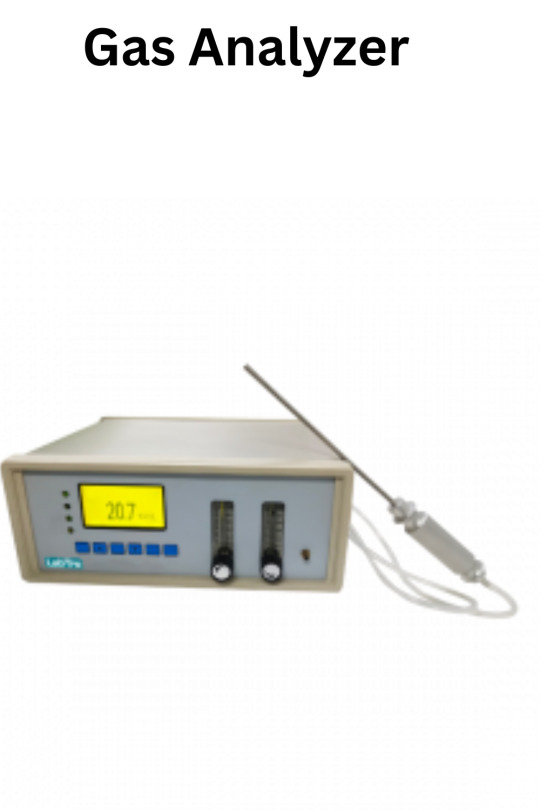
Labtro Gas Analyzer uses advanced infrared detection with a high-power carbon membrane self-priming pump to continuously monitor CO2, CO, CH4, NOx, SO2, and more. Equipped with electrochemical, infrared, and laser detection for flammable and toxic gases, it offers precision fine-tuning and one-click pump start.
0 notes
Text
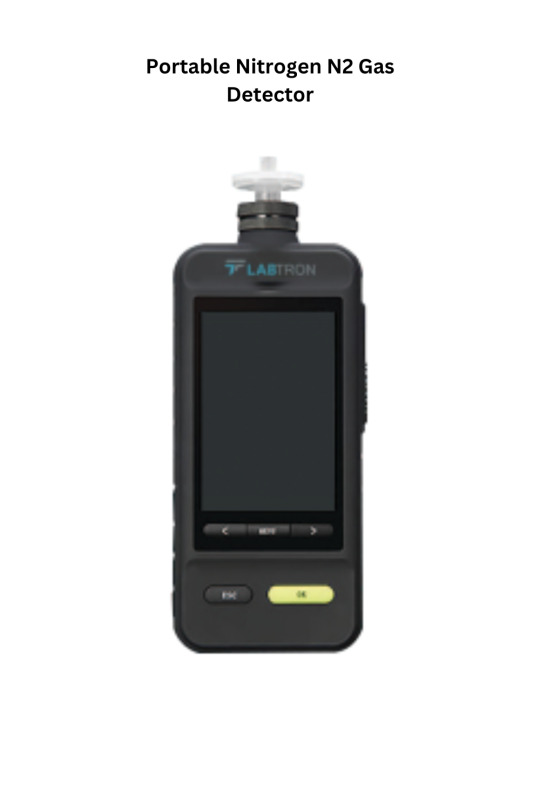
Portable Nitrogen N2 Gas Detector
Labtron Portable Nitrogen N₂ Gas Detector uses electrochemical detection to measure 0-100% VOL. Operating from -20°C to 50°C (optional probe up to 1200°C), it offers adjustable flow rates (0-500 ml/min) and features a mini vacuum pump for stable, precise measurements.
0 notes
Text
Theirdesigned products are used in various industries such as oil travel and tourism
Al Tadhamon Safety Equipment & Clothing LLCBased in the city of Sharjah, Al Tadhamon Safety Equipment & Clothing is aleading company offering the best safety equipment and accessories. Theirdesigned products are used in various industries such as oil travel and tourism,shipping and automobiles. They are the sole distributors in the areas of HarleyDavidson and Abu Dhabi for many automotive companies associated withNISSAN brand. Among the variety of safety equipment plastic warning mesh suppliers made available by thecompany includes safety boots, safety shoes, chemical and dust goggles, ear plugs,face mask, work uniforms, safety harness, welding helmets, ear defenders andothers. Other products listed on their website include high-ankle safety shoes, gasmonitors, safety harness, safety hook, nylon rope and others.
They have well-trained professionals and skilled team ready to assist you in meeting all the safetyand protective apparel needs of your business. They offer safety equipment fromsome of the top brands in the Emirates such as Climax, Tough, Study Plus, Tasco,Stopac and many more.Atlas Safety ProductsAlso abbreviated as ASP, Atlas Safety Products is another leading company in theUAE which is specialised in the supply and distribution of personal protectiveequipment. They have a large inventory of all the equipment and supplies neededfor meeting the on-demand requirements of the customer. The best safetyequipment supplied by the Atlas Safety Products makes the work environmentsafer, productive and healthier. They design personal protective equipment inaccordance with the health and safety standards. With decades of experience inselling the high-quality atlas safety products, the company has all the requiredsafety equipment used for protecting head, feet, hands and to fully protect theindustrial workers who are exposed to high risk situations. Emirates Gate Building Material & Safety Equipments Trading LLCOne of the best personal protective equipment manufacturers, Emirates Gate is aDubai based company that offers high quality materials and their specifications inaccordance to the international standards.
The company website is in the name ofWarrior Safety which is part of the group of five different companies in the UAE.The quality product solutions can be used for various purposes in the industrialsites to ensure safety of workers and offer different safety types as per theindustrial work requirements such as foot protection, ear protection, eye protection,hand protection series, head and face protection. Depending upon the type ofprotection needs, there are several safety equipment made available by thecompany. Home Protection Service LLCLocated in the city of Dubai, Home Protection Service is also abbreviated as HPSthat deals with supplying security services, equipment suppliers and others.Offering state of the art products and quality services, the company is a trustworthyand highly reputed name in the industry. Established in 1982, it is one of the oldesthome protection service providers in the market. It deals with offering highlyintegrated safety and security systems that have huge demand in the market. Itdelivers a wide array of high quality, cost effective and innovative safety productsto choose from.
0 notes
Text
Gasmonitor: weinig groei in aantal warmtepompen voor bestaande bouw in 2021

De hr-ketel bleef ook in 2021 het meest verkochte verwarmingsapparaat. In totaal zijn 431.000 hr-ketels verkocht. Hoewel de verkoopcijfers van de warmtepomp ook toenamen (16% ten opzichte van 2020), was deze groei hoofdzakelijk toe te wijzen aan nieuwbouwwoningen. Dit heeft ermee te maken dat nieuwbouw sinds 2018 in principe geen aardgasaansluiting meer krijgt. Van de 72.300 verkochte warmtepompen, waren er minimaal 3800 bestemd voor een hybride warmtepomp (hr-ketel met warmtepomp). De verkoop van de hr-ketels was vrijwel volledig bestemd voor bestaande woningen. De Gasmonitor betreft de verkoopcijfers van het jaar 2021. Het baart milieuorganisatie Natuur & Milieu zorgen. Rob van Tilburg, directeur programma’s van Natuur & Milieu licht toe: ‘Het aandeel warmtepompen op de warmtemarkt is nog steeds te klein. Als we op dit tempo doorgaan zijn slechts een half miljoen bestaande woningen tussen 2020 en 2030 uitgerust met een (hybride) warmtepomp, en heeft een groot aantal huishoudens nog jarenlang te maken met extreem hoge gasprijzen. Dit komt niet vanzelf goed ondanks inspanningen van de overheid en de sector. Alle hens aan dek is nodig om zo snel mogelijk meer installateurs en apparaten beschikbaar te krijgen voor de overgang naar aardgasvrij wonen.’ EnergiecrisisDe cijfers komen uit de Gasmonitor, een jaarlijks onderzoek van Natuur & Milieu naar de verkoopcijfers van warmtetechnieken. In 2050 moeten alle woningen van het aardgas af zijn. Dit is noodzakelijk om klimaatverandering tegen te gaan. Daar komt nu de energiecrisis als gevolg van de oorlog in Oekraïne bij. De gasprijzen stijgen bijna dagelijks en veel huishoudens hebben te maken met torenhoge energierekeningen. De Gasmonitor geeft inzicht in de transitie naar aardgasvrij wonen.Hybride warmtepompDit voorjaar kondigde minister De Jonge (Volkshuisvesting) aan dat huiseigenaren vanaf 2026 verplicht zijn bij vervanging van hun hr-ketel minimaal een hybride warmtepomp te laten installeren. Andere opties zijn een duurzaam warmtenet of een volledig elektrische warmtepomp. Uit de Gasmonitor blijkt dat er afgelopen jaar minimaal 3800 hybride warmtepompen zijn aangevraagd via de ISDE-subsidieregeling. Een lichte stijging (6%) ten opzichte van het jaar daarvoor. Op basis van deze cijfers is het niet aannemelijk dat huishoudens binnen vijf jaar de overstap kunnen maken naar een hybride warmtepomp. Natuur & Milieu ziet de hybride warmtepomp als een belangrijke stap naar aardgasvrij wonen.Actie nodig Volgens Natuur & Milieu heeft dat enerzijds te maken met de kosten van een hybride warmtepomp, maar zeker ook met de lange levertijden en materiaaltekorten. ‘Huishoudens worden nu geconfronteerd met extreem hoge gasprijzen Het belang om snel meer hybride warmtepompen bij consumenten te krijgen is groot, zodat mensen op de energierekening kunnen besparen. Daarvoor is het in ieder geval noodzakelijk dat er meer vakbekwame installateurs komen, want daar is een flink gebrek aan. Daarnaast moeten fabrikanten van hybride warmtepompen hun productie in de komende jaren fors gaan opschalen. Een grotere toegankelijke markt maakt de hybride warmtepomp goedkoper’, aldus van Tilburg. De milieuorganisatie benadrukt het belang van financiële steun voor mensen met lage inkomens. Read the full article
0 notes
Text
Crowcon GASMAN Oxygen O2 Personal Gas Safety Monitor Detector Act Soon.... https://ebay.to/2CRacqG
0 notes